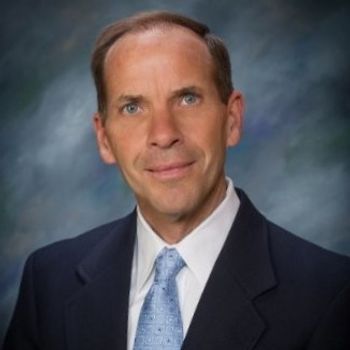
A shot of adrenaline for your retirement savings
Physicians who want to adequately fund their retirement must consider a cash balance plan.
Many doctors are simply not saving enough money. A late start to saving for retirement due to years of school and training combined with low retirement plan contribution limits creates the potential for an underfunded retirement portfolio. Many doctors also build their practices, assuming that they will one day sell them and use this financial gain to retire. Unfortunately, this may not be enough money to maintain the lifestyle that they are accustomed to.
It is generally considered safe and recommended to take retirement money distributions of no more than 3.5 to 4 percent as this will maintain a retirement account portfolio balance without drawing it down too quickly, and perhaps even allow it to grow. This means that a $1 million portfolio will provide $35,000 to $40,000 per year. Savings of $3 million or more may be necessary for many physicians.
Physicians who want to adequately fund their retirement must consider a cash balance plan. Like a shot of adrenaline, a cash balance plan can inject the funds necessary to stimulate weak retirement savings.
Cash balance plan basics
A cash balance plan is a type of qualified retirement plan that typically is layered on top of a combination 401(k)/Profit Sharing Plan. It is a defined benefit pension plan with similar characteristics to a defined contribution plan such as a 401(k) plan. For example, like a 401(k) plan, the participant sees his or her own individual account balance. Additionally, the cash balance plan allows for a portable account balance so upon departure from the company the participant may roll over the balance into another qualified plan such as an Individual Retirement Account (IRA).
Participants are promised a quantified benefit at retirement; this may be in the form of an annuity or a lump sum. At age 62, the payable annuity amount is up to $225,000 per year, or a lump sum amount up to $2,877,495.
A cash balance plan allows medical practice owners to contribute money annually to participant accounts on top of the money that has been contributed to a 401(k)/Profit Sharing plan. This company “pay credit” is a percentage of pay, usually 5 to 7 percent, or a specific dollar amount. The annual contribution can range from $55,000 to more than $300,000, depending on the individual’s age and income. Additionally, participant accounts are guaranteed an annual interest crediting rate from the invested money. This rate may be fixed or variable and is typically tied to an index, such as the 30-year Treasury Bond. Cash balance plans are designed to be in operation for a minimum of five years and a maximum of 10 years.
Seven major benefits of cash balance plans
1) Multiply retirement savings: Doubled or even quadrupled annual retirement plan savings are possible. A 401(k) plan allows contributions of up to $19,000 per year plus an extra $6,000 per year “catch up” for individuals 50 years old and over. Profit sharing allows up to an additional $37,000 for a total of $62,000 per year. A cash balance plan allows an extra $55,000 to $336,000 of deductible savings.
2) Tax deduction: A medical practice can deduct all contributions made for employees. As individuals, medical practice owners and partners may deduct dollar for dollar the money invested into a cash balance plan. Typically, this can be much larger than even the homeowner's mortgage interest payments deduction.
3) Tax deferral: Money is invested tax deferred and may ultimately be rolled into an IRA account where it will continue to grow tax deferred.
4) Tax savings: At a 40 percent tax rate, the savings can range from $22,000 to $136,000 per year. This is money that would have gone to the IRS in taxes, but instead it is invested to grow, tax deferred.
5) Attract and retain employees: Cash balance plans are very attractive to current and future partners and employees. When a cash balance plan is implemented, retirement plan participation improves.
6) Protection from creditors: As a qualified retirement plan, the cash balance plan assets are protected from creditors. This includes protection from bankruptcy proceedings and civil lawsuits.
7) On-time, comfortable retirement: Cash balance plans allow significant annual contributions from $55,000 to $340,000, depending on variables including age and income. They allow physicians to catch up and save an adequate amount of money for a comfortable retirement.
2019 Contribution Limits Table example:
Taxes saved 45%
*401(k) $19,000, $6,000 catch up for ages 50 yr.+, $37,000 profit sharing. **High end of contribution range.
During their careers, physicians expertly provide care for their patients while often neglecting their own financial health. A cash balance plan will put more of their hard-earned money to work for them, instead of into the hands of the IRS. By the time retirement comes, these physicians will have enough savings to last all through their retirement years.
Seth Swenson, MBA, is president of Orchid Wealth Management in Palo Alto, CA. He may be reached at
Newsletter
Stay informed and empowered with Medical Economics enewsletter, delivering expert insights, financial strategies, practice management tips and technology trends — tailored for today’s physicians.
















